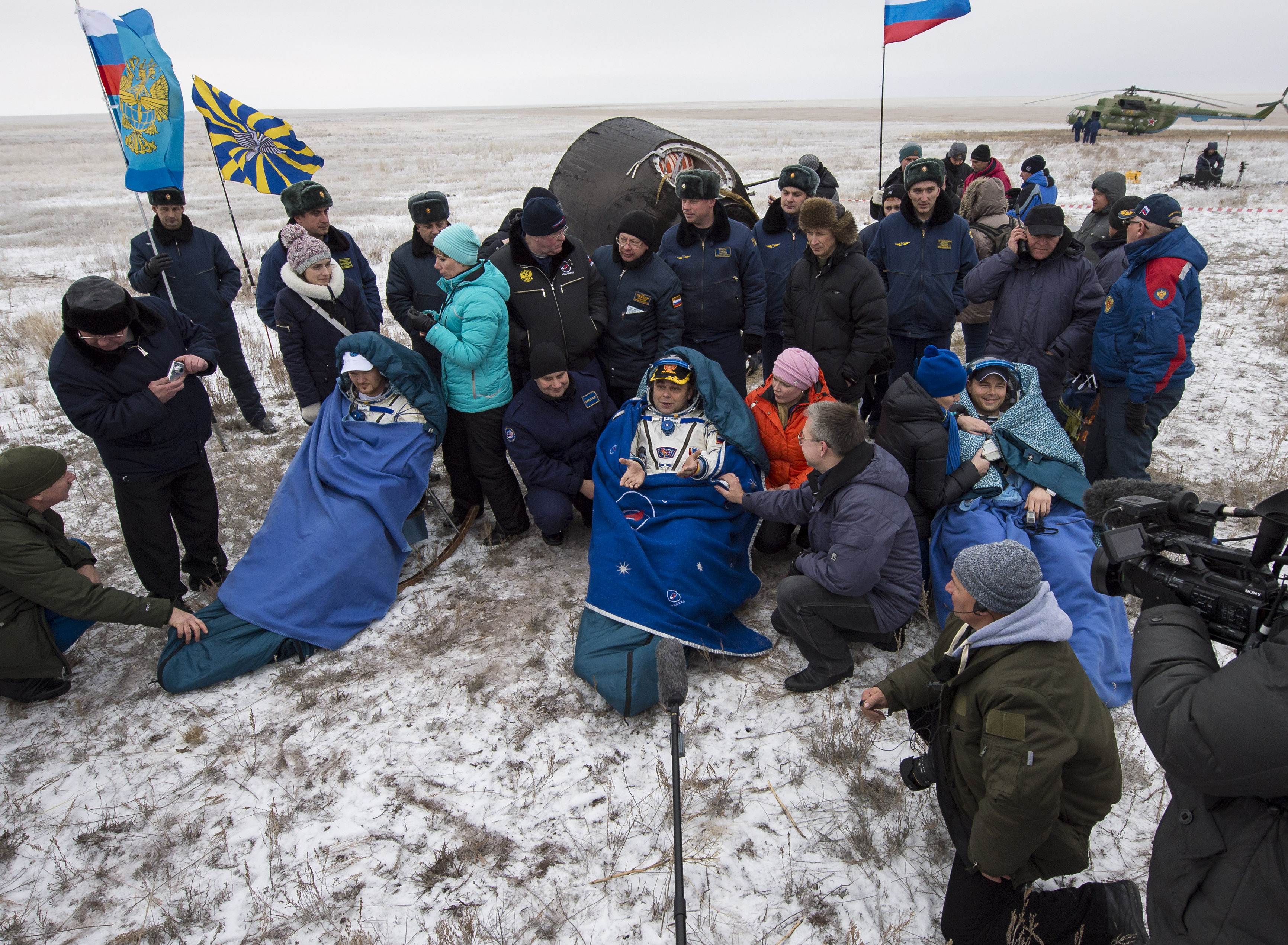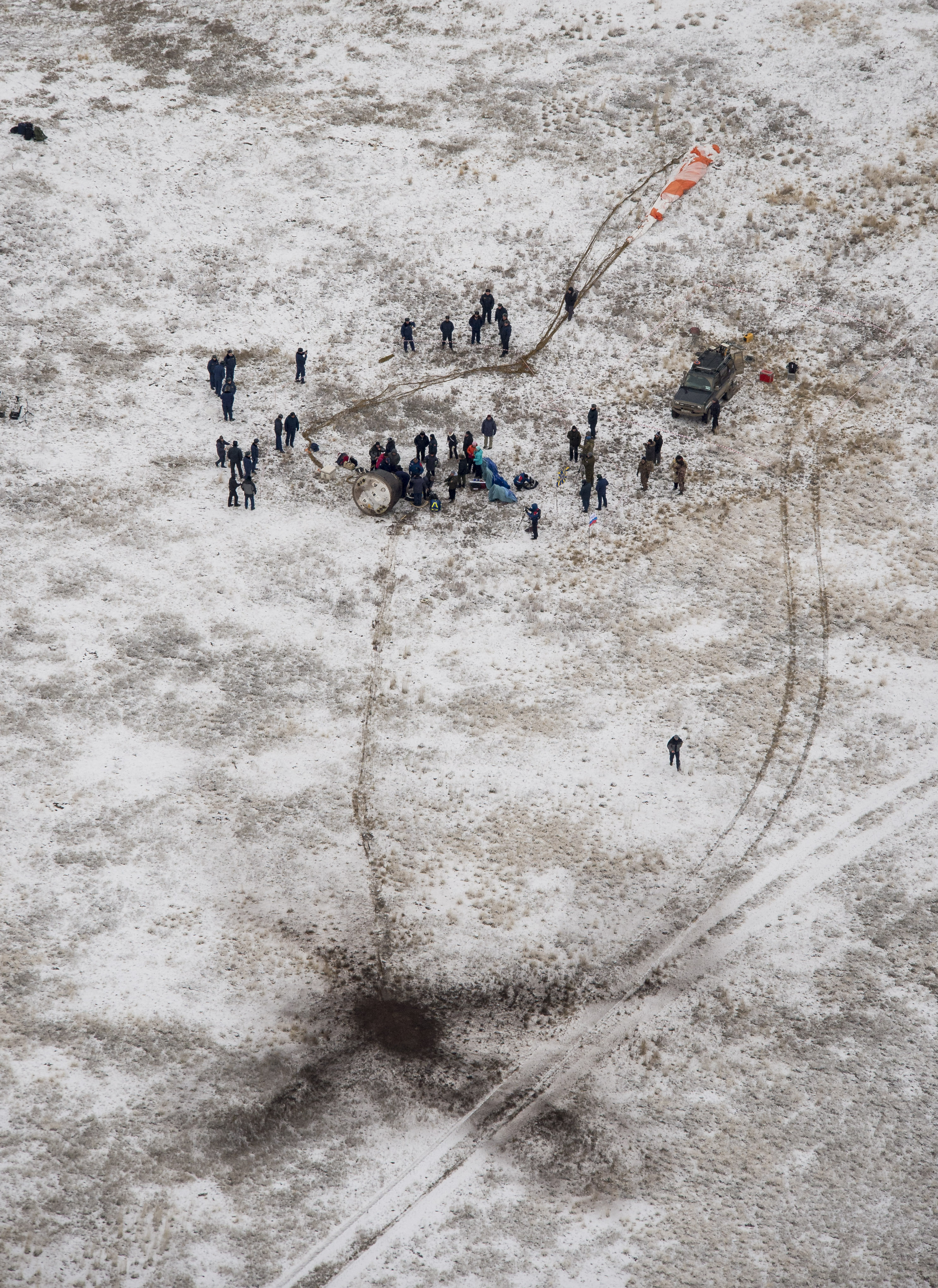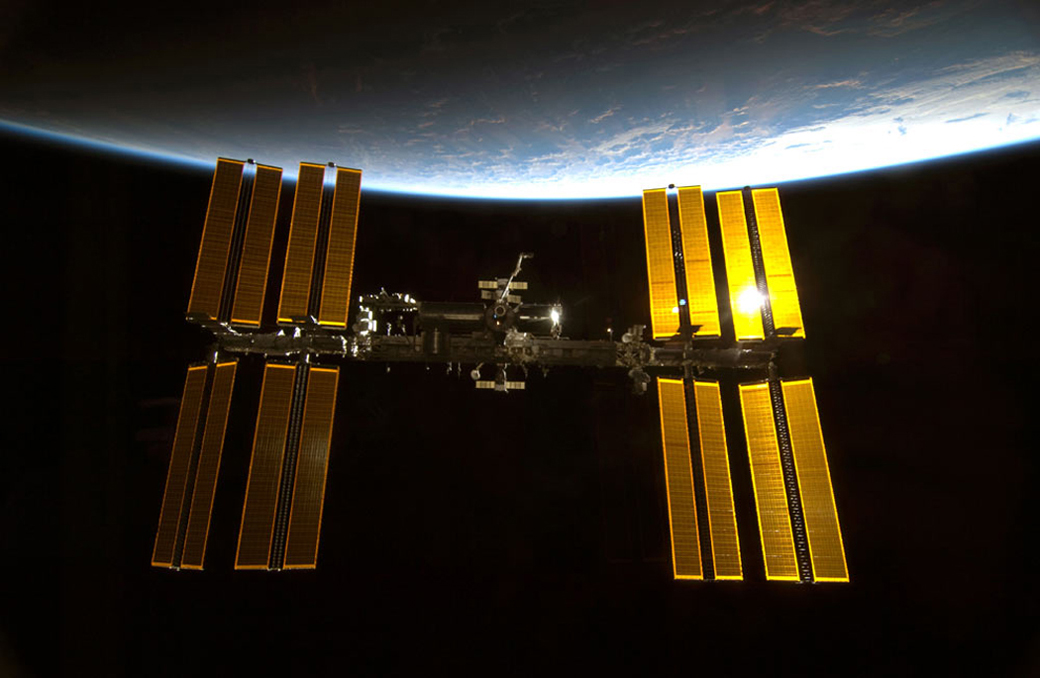Soyuz Spacecraft Returns Space Station Crew to Earth

An American, a Russian and a German returned from the International Space Station late Sunday night (Nov. 9), landing in Kazakhstan after spending 165 days in orbit.
"What a ride it has been," NASA astronaut Reid Weisman wrote on Twitter just before he, Roscosmos cosmonaut Maxim Suraev and European Space Agency astronaut Alexander Gerst closed the hatch separating their Russian Soyuz TMA-13M spacecraft from their home of 5 1/2 months, the space station, at 4:27 p.m. EST (2127 GMT) Sunday.
Three hours later, at 7:31 p.m. EST (0031 GMT), the three Expedition 40/41 crewmates undocked the Soyuz from the orbiting laboratory's Rassvet mini-research module, setting off on their return to Earth. Monitoring their departure from onboard the station were Expedition 42 commander Butch Wilmore and cosmonauts Alexander Samokutyayev and Elena Serova, who arrived at the outpost in September. [Space Station Photos: Expedition 40/41 in Pictures]
The Soyuz crew performed a 4-minute, 41-second engine burn at 10:05 p.m. EST (0305 GMT on Nov. 10), slowing the craft and causing it to fall out of orbit.

After re-entering the atmosphere and descending under a parachute, Wiseman, Suraev and Gerst touched down on the frigid steppe of Kazakhstan at 10:58 p.m. EST (0358 GMT; 9:58 a.m. Kazakh local time on Nov. 10), northeast of the remote town of Arkalyk.
Get the Space.com Newsletter
Breaking space news, the latest updates on rocket launches, skywatching events and more!
The capsule landed upright, but wind caught its parachute and pulled the spacecraft onto its side.
Poor weather conditions threatened to delay Russian search and recovery forces' arrival at the landing site, but the team's helicopters were able to touch down near the Soyuz and assist Wiseman, Suraev and Gerst with exiting the space capsule.
The three spaceflyers were provided brief medical checks before being flown to the Kazakh town of Kustanai for a traditional welcome ceremony. From there, Wiseman and Gerst were to be flown by a NASA jet to Scotland, where the two will part ways: Gerst will depart for the European Space Agency while Wiseman flies to NASA's Johnson Space Center in Houston.
Suraev will be flown directly from Kustanai to the Gagarin Cosmonaut Training Center in Star City, located outside of Moscow.
The three launched together to the space station onboard Soyuz TMA-13M from the Baikonur Cosmodrome in Kazakhstan on May 28. The flight marked both Wiseman's and Gerst's first time in space. Suraev previously lived aboard the station for 169 days during Expeditions 21 and 22 from September 2009 through March 2010.
While on the International Space Station this time, Suraev, Wiseman and Gerst conducted a record amount of science research and performed maintenance to keep the station's systems running. Suraev performed his second career spacewalk, jettisoning spent equipment and photographing the outside of the space station.
Wiseman ventured outside the station on two spacewalks, the first together with Gerst to stow a failed coolant pump and install a relay to provide backup power for the mobile transporter that moves the space station's primary robotic arm. Wiseman's second extravehicular activity (EVA) with Wilmore replaced a failed power regulator.

"This is the most unique ship with the most amazing crew and most incredible ground support that I've ever worked with, and it has been an honor and a privilege to serve 165 days up here," Wiseman said the day before he departed the space station.
"They say [the station] is the most complex machine that humanity has ever built," Gerst said. "Now, even after half a year, it is impossible for me to fathom how complex it is to actually operate this machine."
"What I'm sure of is this is the finest example of teamwork that I've ever seen in my life," Gerst added.
The departure of Wiseman, Gerst and Suraev marked the end of Expedition 41. Wilmore, Samokutyaev and Serova are scheduled to remain aboard the space station through March.
Three more Expedition 42 crew members, including NASA astronaut Terry Virts, Anton Shkaplerov with Roscosmos and the European Space Agency's Samantha Cristoforetti, are scheduled to launch to the station on Nov. 23.
Follow collectSPACE.com on Facebookand on Twitter at @collectSPACE. Copyright 2014 collectSPACE.com. All rights reserved.
Join our Space Forums to keep talking space on the latest missions, night sky and more! And if you have a news tip, correction or comment, let us know at: community@space.com.

Robert Pearlman is a space historian, journalist and the founder and editor of collectSPACE.com, a daily news publication and community devoted to space history with a particular focus on how and where space exploration intersects with pop culture. Pearlman is also a contributing writer for Space.com and co-author of "Space Stations: The Art, Science, and Reality of Working in Space” published by Smithsonian Books in 2018.In 2009, he was inducted into the U.S. Space Camp Hall of Fame in Huntsville, Alabama. In 2021, he was honored by the American Astronautical Society with the Ordway Award for Sustained Excellence in Spaceflight History. In 2023, the National Space Club Florida Committee recognized Pearlman with the Kolcum News and Communications Award for excellence in telling the space story along the Space Coast and throughout the world.










